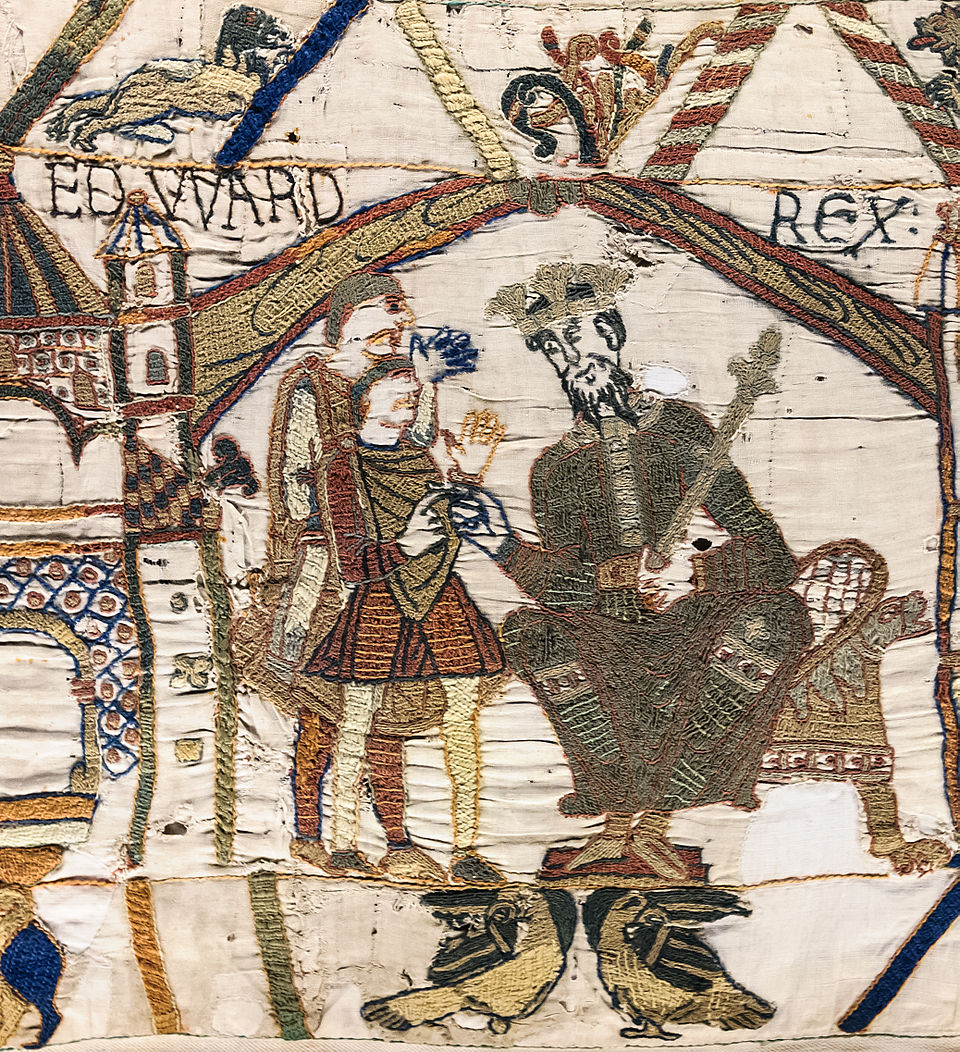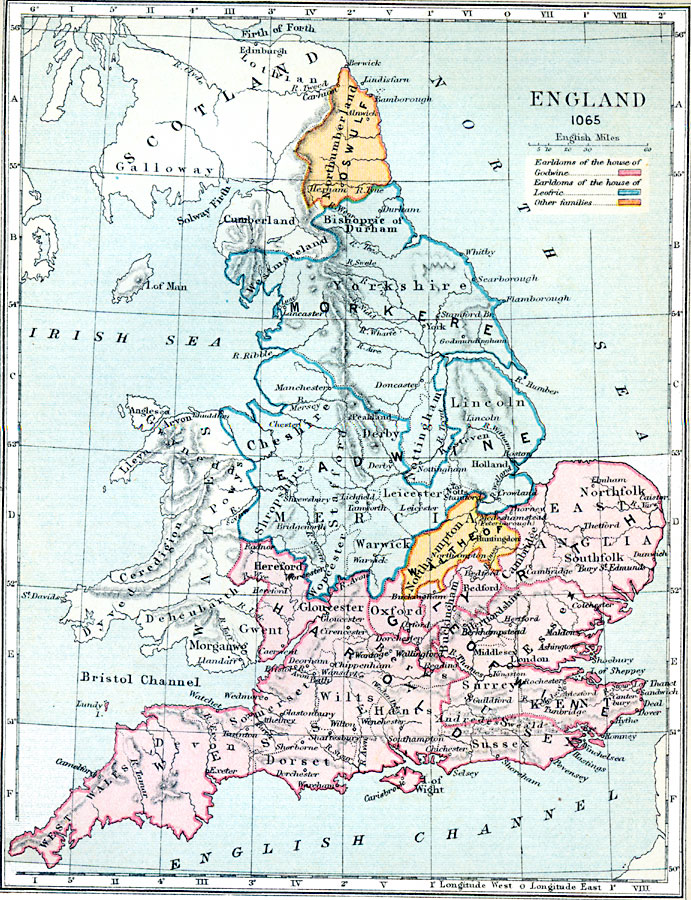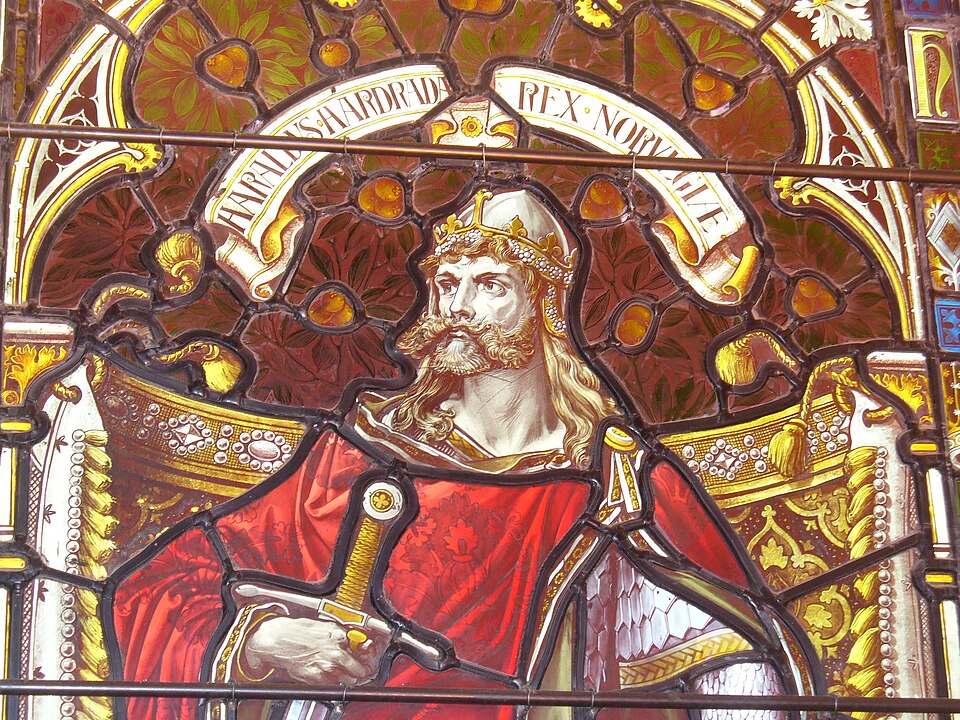OCR Specification focus:
‘The importance of the Godwin family (Earl Godwin, Edward’s marriage to Edith, the crisis of 1051–1052, Harold Godwinson and his brothers); the succession crisis including the claim of Harald Hardrada’
The Godwin family were among the most powerful political players in mid-11th century England, influencing royal policy, military affairs, and the succession to the throne.
The Rise and Importance of the Godwin Family
The Godwin family emerged as a dominant political force under Earl Godwin of Wessex, one of the most influential Anglo-Saxon nobles.
Their importance derived from:
Extensive landholdings across southern England.
Military capabilities and loyal retinues.
Strategic marriages into the royal family.
Earl Godwin’s Position
Godwin gained power under King Cnut, consolidating his control over Wessex. Under Edward the Confessor (1042–1066), Godwin became the king’s leading advisor, though their relationship was at times tense.
Earl: A noble who governed a large region (earldom) on behalf of the king, responsible for military defence, justice, and administration.
Edward’s Marriage to Edith
In 1045, Edward married Edith of Wessex, Godwin’s daughter.

Opening scene of the Bayeux Tapestry, depicting Edward the Confessor enthroned and Harold Godwinson at Winchester. It illustrates the Godwins’ proximity to the king and their influence at court in the 1050s. The Latin titling and iconography are part of the original, eleventh-century narrative source. Source
This union:
Strengthened Godwin’s political influence at court.
Linked the royal house with one of the most powerful noble families.
Brought potential tensions, as Edward had close Norman connections and sometimes mistrusted the Godwins.
The Crisis of 1051–1052
A major turning point came in 1051 when tensions flared between the king and Godwin:
A violent incident in Dover between townspeople and Edward’s visiting Norman relative led to royal demands for punishment.
Godwin refused to enforce the king’s order, challenging royal authority.
Edward exiled Godwin and his family, replacing them with Norman allies.
In 1052:
Godwin returned with a fleet, supported by English nobles opposed to Norman influence.
Edward was forced to restore Godwin to his lands and titles.
The event revealed both the family’s strength and the fragility of royal power when challenged by leading nobles.
Harold Godwinson and His Brothers
Following Earl Godwin’s death in 1053, his son Harold Godwinson became Earl of Wessex. Harold:
Consolidated the family’s dominance.
Expanded influence over the military and governance.
Acted as Edward’s chief military commander.
His brothers also held key earldoms:
Tostig Godwinson: Earl of Northumbria.
Gyrth Godwinson: Earl of East Anglia.
Leofwine Godwinson: Earl of Kent and other territories.
This network of earldoms gave the family unrivalled control over much of England.

A colour-coded historical map of England in 1065 indicating earldoms held by the House of Godwin versus rival families. It clarifies how Harold, Tostig, Gyrth, and Leofwine controlled large tracts of the kingdom on the eve of the succession crisis. The map also shows shire boundaries and key towns (extra detail beyond the syllabus). Source
The Succession Crisis
By the early 1060s, Edward the Confessor was ageing and had no heir. This led to competing claims and political manoeuvring over the succession.
Harold Godwinson’s Claim
Harold’s position as the most powerful earl and trusted advisor gave him a strong domestic claim.
However, rival claims weakened unity:
Duke William of Normandy claimed Edward had promised him the throne.
Harald Hardrada, King of Norway, based his claim on an earlier agreement between Cnut and Magnus I of Norway.
Succession Crisis: A period of political instability caused by uncertainty or dispute over who should inherit the throne.
The Claim of Harald Hardrada
Harald Hardrada’s claim was rooted in a pact between Magnus I of Norway and Harthacnut (King of Denmark and England), in which they agreed that the survivor would inherit both kingdoms.

Stained-glass portrait of Harald Hardrada (Harald III of Norway), a key claimant in 1066. It provides a recognisable visual for students while you explain his dynastic claim via Magnus I and Harthacnut. Artistic details and ecclesiastical setting are not part of the OCR content but aid recognition (extra detail beyond the syllabus). Source
When Harthacnut died in 1042, Magnus did not press the English claim, but Harald, as Magnus’s successor, saw an opportunity in 1066.
Harald’s invasion plans were strengthened by:
Support from Tostig Godwinson, Harold’s estranged brother, who had been exiled from Northumbria in 1065.
A belief that Harold’s accession would be contested, making England vulnerable.
The Godwin Family’s Influence on the Crisis
The Godwin family’s dominance was both a stabilising and destabilising factor:
Their power allowed them to protect England from external threats.
Internal divisions (especially Tostig’s rebellion) weakened England’s unity.
Harold’s rise to the throne in January 1066 was a direct outcome of the family’s position.
Key Events Leading to the 1066 Confrontations
1051–1052: Exile and triumphant return of the Godwins.
1055–1065: Consolidation of the family’s regional power.
1065: Northumbrian revolt against Tostig; Harold’s role in Tostig’s exile.
Early 1066: Death of Edward the Confessor and Harold’s coronation.
Mid-1066: Harald Hardrada’s alliance with Tostig, leading to the Battle of Stamford Bridge.
The Godwin family were central to the political landscape of late Anglo-Saxon England. Their rise, alliances, and internal rivalries directly shaped the succession crisis that culminated in the Norman Conquest.
FAQ
Earl Godwin was the son of Wulfnoth Cild, a Sussex thegn who lost his lands under King Æthelred II. Godwin rose to prominence serving under King Cnut after 1016.
By demonstrating military skill and political loyalty to Cnut, Godwin was rewarded with the earldom of Wessex, one of the most powerful in the realm.
His rise also owed much to his ability to balance alliances between Danish and English elites during Cnut’s reign.
Edward spent much of his youth in exile in Normandy, forming strong ties with Norman nobles.
The Godwins represented an Anglo-Saxon faction with extensive land, military power, and influence that could overshadow royal authority.
Tensions intensified after incidents like the Dover dispute (1051), where Godwin’s defiance of Edward’s orders reinforced perceptions of the family as overmighty subjects.
The crisis demonstrated that a united nobility could challenge the king’s authority.
Edward’s exile of the Godwins in 1051 temporarily strengthened Norman influence at court.
Their return in 1052, supported by English nobles, forced Edward to reinstate them without punishment.
This event showed that the monarchy’s survival depended on noble cooperation and set a precedent for aristocratic resistance.
Tostig’s harsh rule in Northumbria led to a local revolt in 1065.
Harold mediated the crisis by accepting Tostig’s exile, alienating his brother and creating a personal rift.
This resentment drove Tostig to ally with Harald Hardrada in 1066, directly contributing to the Norwegian invasion and the Battle of Stamford Bridge.
It stemmed from an agreement between Harthacnut (King of Denmark and England) and Magnus I of Norway that the survivor would inherit the other’s kingdoms.
As Magnus’s successor, Hardrada believed he inherited this claim.
Although decades had passed and Edward had been on the throne since 1042, dynastic agreements still carried weight in medieval politics, especially when backed by military force.
Practice Questions
Question 1 (2 marks):
Name two of Harold Godwinson’s brothers who held earldoms in 1065.
Mark Scheme:
1 mark for each correct name (maximum 2 marks).
Acceptable answers:Tostig Godwinson
Gyrth Godwinson
Leofwine Godwinson
Question 2 (5 marks):
Explain two reasons why the Godwin family were able to dominate English politics between 1053 and 1066.
Mark Scheme:
Award up to 5 marks:
1–2 marks for each valid reason identified.
1–3 additional marks for clear explanation and supporting detail for each reason.
Indicative content:
Control of multiple earldoms: After Earl Godwin’s death in 1053, Harold became Earl of Wessex and his brothers held other major earldoms (Tostig in Northumbria, Gyrth in East Anglia, Leofwine in Kent), giving the family influence over much of England. (1 mark for identification, up to 2 further marks for explanation of how this gave them political and military power.)
Close ties to the monarchy: Edward the Confessor’s marriage to Edith of Wessex in 1045 linked the Godwins to the royal family, increasing their prestige and influence at court. (1 mark for identification, up to 2 further marks for explanation of how this secured their position and access to royal patronage.)
Accept other relevant, accurate reasons such as military capability, political alliances, and popular support against Norman influence.

